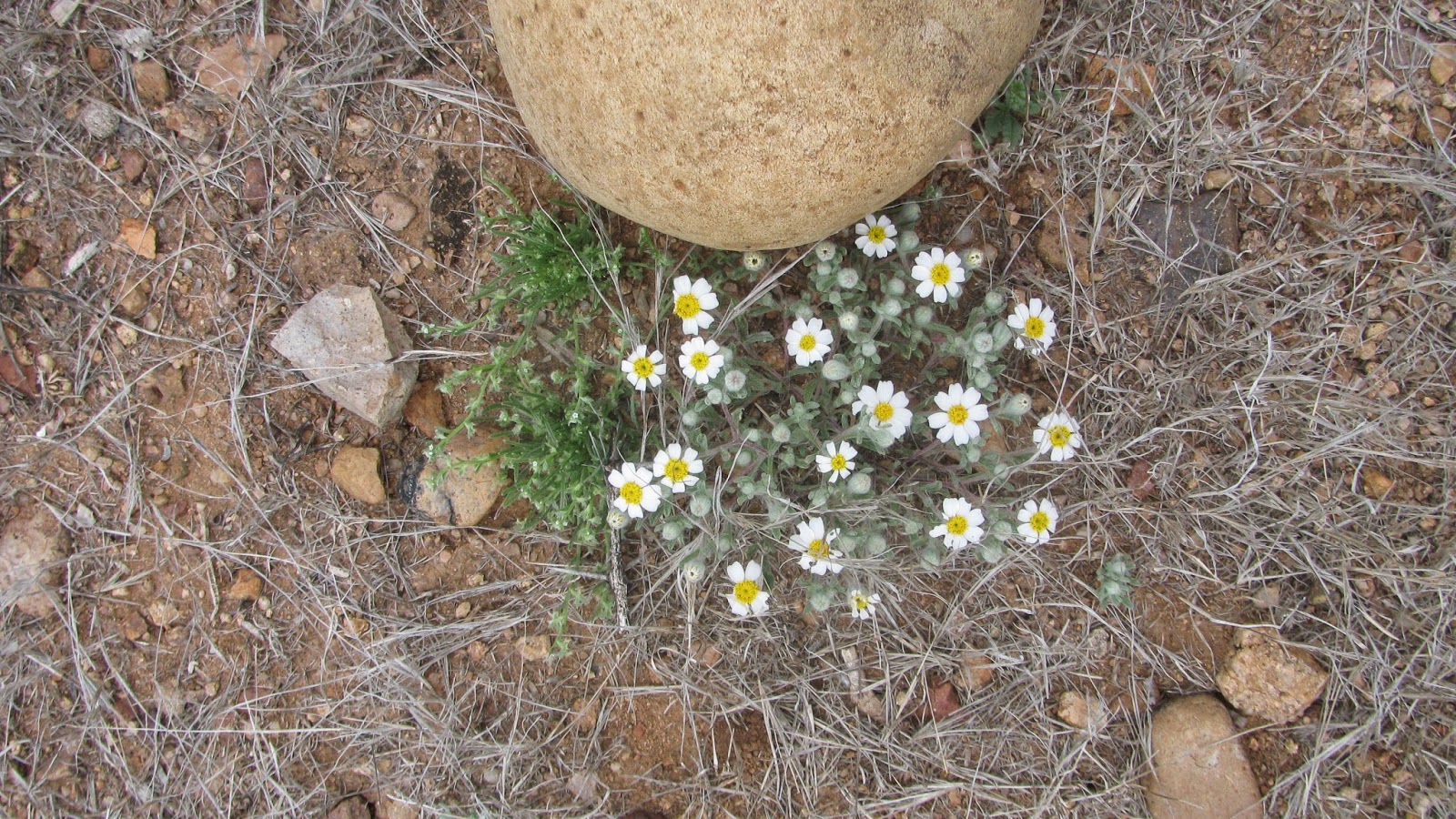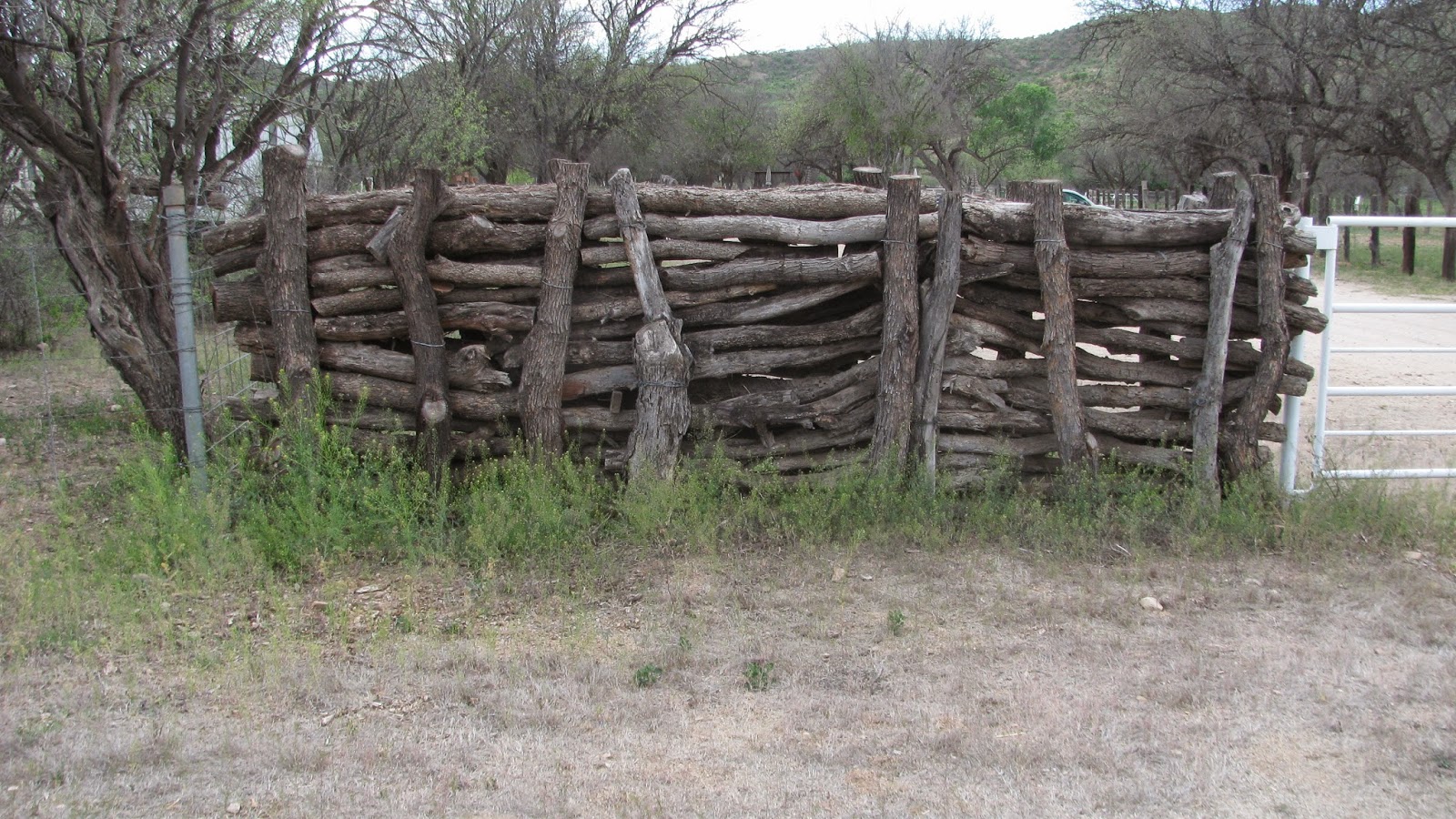Tuesday, March 31, 2015
I drove down to the field school dig to work on some maps, checking the originals against what was on the ground, drawing a new map, re-drawing one that was strangely incorrect. It was so quiet and peaceful working by myself, methodically moving from square to square.
Most of the work this year was within the animal pens and corrals for the Mission (probably dating to somewhere between 1730 and 1775 or so. The Spaniards brought cattle, sheep, goats, pigs, chickens, and horses to southern Arizona, attempting to get the local Native Americans to become ranchers. At first it was not successful, but gradually the number of livestock increased.
If you have livestock, you need to build corrals and pens for various reasons. If the Apache were coming to raid, you would want to herd the animals into an enclosed area that was defensible. If your cattle and sheep were having calves and kids, you might want then penned to prevent coyotes and wolves from killing the young. Other activities might include shearing sheep, milking cows, goats, and sheep; castrating male livestock, butchering animals, and taming horses to ride.
At the mission we are finding trenches and postholes for the corrals, pens, and chutes. It is likely that not all of these were contemporaneous. The topsoil is very thin and homogenous, it does not allow us to tell whether one trench was earlier than a set of postholes. One posthole is probable much later, perhaps 20th century, but the rest of the features appear to be mission period, since with the exception of some fencing staples and cartridge shells, the remaining artifacts date to the Mission occupation.
We have excavated two large areas. One area has a line of post holes for some sort of fence, and a series of trenches outlining pens and a probable chute.
Most of the work this year was within the animal pens and corrals for the Mission (probably dating to somewhere between 1730 and 1775 or so. The Spaniards brought cattle, sheep, goats, pigs, chickens, and horses to southern Arizona, attempting to get the local Native Americans to become ranchers. At first it was not successful, but gradually the number of livestock increased.
If you have livestock, you need to build corrals and pens for various reasons. If the Apache were coming to raid, you would want to herd the animals into an enclosed area that was defensible. If your cattle and sheep were having calves and kids, you might want then penned to prevent coyotes and wolves from killing the young. Other activities might include shearing sheep, milking cows, goats, and sheep; castrating male livestock, butchering animals, and taming horses to ride.
At the mission we are finding trenches and postholes for the corrals, pens, and chutes. It is likely that not all of these were contemporaneous. The topsoil is very thin and homogenous, it does not allow us to tell whether one trench was earlier than a set of postholes. One posthole is probable much later, perhaps 20th century, but the rest of the features appear to be mission period, since with the exception of some fencing staples and cartridge shells, the remaining artifacts date to the Mission occupation.
We have excavated two large areas. One area has a line of post holes for some sort of fence, and a series of trenches outlining pens and a probable chute.
Looking sort of east.
The chute would have directed animals into the pens, controlling the movement of animals was likely important.
The short, parallel trenches appear to be for a chute.
We re-opened the area from last year and expanded it, examining the patterns of trenches and postholes. It seems likely that there was a ramada in the flat area, surrounded by pens and chutes.
Sherds from a reconstructible vessel.
As I walked back to the ranch I admired more wild flowers.
The chute would have directed animals into the pens, controlling the movement of animals was likely important.
The short, parallel trenches appear to be for a chute.
We re-opened the area from last year and expanded it, examining the patterns of trenches and postholes. It seems likely that there was a ramada in the flat area, surrounded by pens and chutes.
Modern posts mark many of the ancient postholes.
The areas inside the trenches appear to be pens, with many depressions that are probably cattle and horse hoof prints. In the area below, you can see a parallel line of posts separate two smaller pens.
Footprints.
Last year the vegetation clearly marked the trenches. We traced them this year, again, by using a probe. Finally at the end of the fieldwork the vegetation is growing enough to see the trenches. The plants like the trenches because it cuts down through a hard layer and allows water to accumulate. The dirt filling the trenches is also softer.
Pin flags and vegetation marking a trench.
It was a beautiful day, the clouds passing overhead.
Distant mountain.
The other area we are working is in the road crossing the property. Erosion is damaging Hohokam pit structures, and we have been putting units in collecting artifacts, plant materials for radiocarbon dates and dietary analysis, and identifying architecture.
This house is very typical, with an entrance off one side, a hearth just inside the entrance, and a row of posts along the back wall. Several intrusive roasting pits are also visible. There is a large prehistoric village at the site, probably with many houses. We can only see the ones in the road, the others are buried in the nearby areas. The occupation appears to date to around A.D. 900 to 1100, based on the pottery styles present in the houses and pits.
Feature 47, Hohokam pit structure.
People often ask how we can see the pit structures in the road. The reason- differences in soil color and the presence of charcoal and artifacts, stuff that filled the pit after the house was abandoned. Below you can clearly see the difference in soil color- you should probably click on the picture to enlarge it and it is even more visible.
Different soil colors (click on picture to enlarge).
We excavated a 1m by 2m unit in this house in 2013. Since then, vehicular traffic and the weather have further eroded the structure. A reconstructible vessel has started to appear.
Sherds from a reconstructible vessel.
As I walked back to the ranch I admired more wild flowers.
Little white flowers.
This one just seemed bizarre.
Yellow flower.
A droopy-eared cow was curious and stared at me near the cattle tank.
Moo!
At the ranch is an example of the type of fence that probably stood in the Mission period trenches we have excavated.
Traditional fence.
Of course I had to stop and say hello to the baby goats. They were all napping, probably tired out from a long morning of playing king of the castle and other goat games.
Twins.














